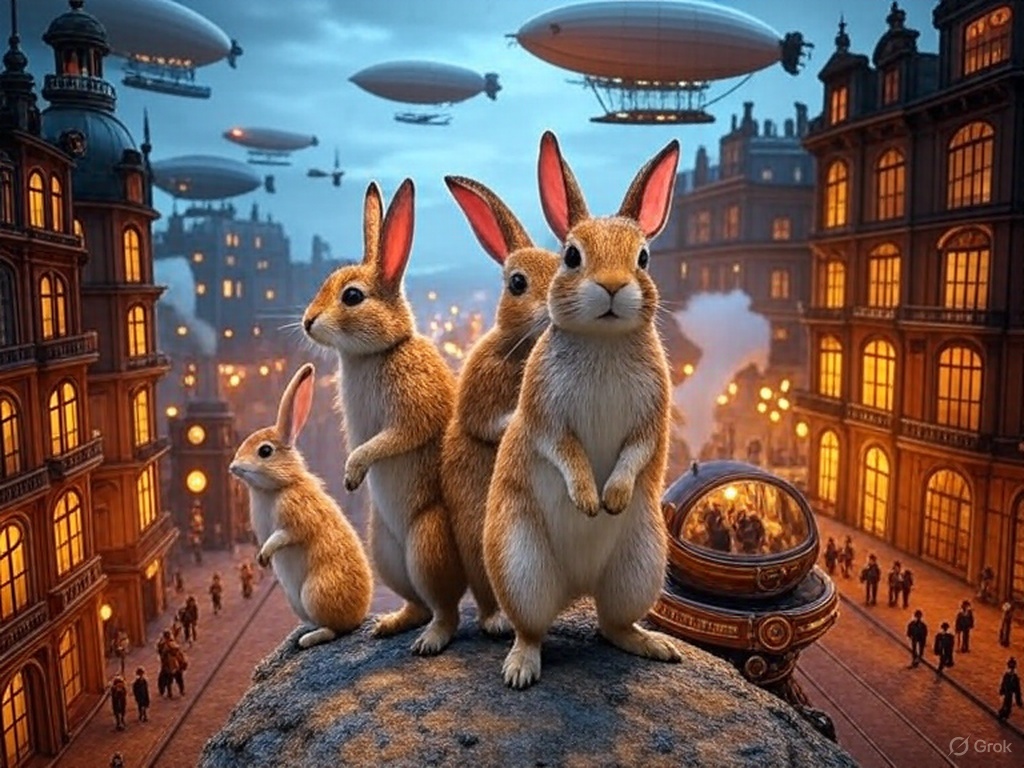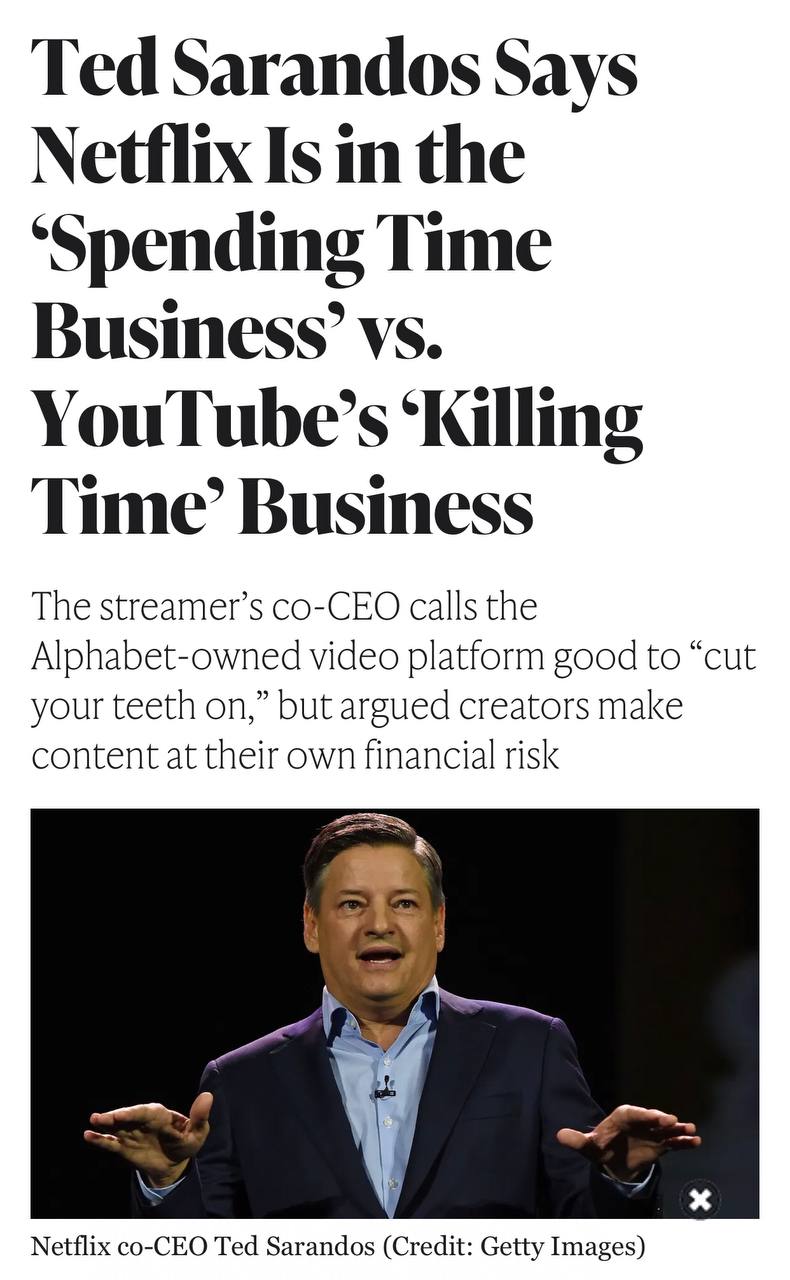In the ever-evolving landscape of entertainment, individual coping mechanisms manifest uniquely, often reflecting how we engage with media to unwind, escape, or find inspiration.
 Some binge-watch cinematic masterpieces to process emotions, while others scroll through short, snappy videos for a quick dopamine hit. This diversity in consumption habits has fueled a heated rivalry between streaming giants like Netflix and YouTube, each vying for our attention in distinct ways.
Some binge-watch cinematic masterpieces to process emotions, while others scroll through short, snappy videos for a quick dopamine hit. This diversity in consumption habits has fueled a heated rivalry between streaming giants like Netflix and YouTube, each vying for our attention in distinct ways.
Recent statements from Netflix’s leadership, alongside industry data, highlight a fascinating clash of philosophies and strategies that reveal deeper truths about how we cope through media.
Netflix’s Bold Claim: “We’re Saving Hollywood”
 Netflix’s CEO recently made waves with a provocative statement: rather than killing Hollywood, Netflix is “saving” it. This claim has left cinephiles reeling, with many questioning whether the streaming giant’s model — built on algorithm-driven content and a flood of originals — truly supports the art of filmmaking or simply prioritizes quantity over quality.
Netflix’s CEO recently made waves with a provocative statement: rather than killing Hollywood, Netflix is “saving” it. This claim has left cinephiles reeling, with many questioning whether the streaming giant’s model — built on algorithm-driven content and a flood of originals — truly supports the art of filmmaking or simply prioritizes quantity over quality.
Netflix argues that its platform provides a lifeline for creators by offering global reach and financial backing for projects that might never see the light of day in traditional Hollywood. Shows like Squid Game and The Crown have indeed become cultural phenomena, proving that Netflix can create prestige content that resonates worldwide.
However, the statement feels like a defensive jab amid growing criticism. Hollywood purists argue that Netflix’s data-driven approach often sacrifices artistic depth for mass appeal, leading to formulaic content that caters to algorithms rather than human emotion.
If Netflix is “saving” Hollywood, it’s doing so by redefining it — shifting the focus from theatrical releases to streaming-first models. This pivot has undeniably disrupted traditional studios, but whether it’s a rescue mission or a takeover remains a matter of perspective.
YouTube: The “Time-Killer” That’s Winning
 In a pointed critique, Netflix’s CEO labeled YouTube a “time-killer,” drawing a sharp contrast between the two platforms.
In a pointed critique, Netflix’s CEO labeled YouTube a “time-killer,” drawing a sharp contrast between the two platforms.
Netflix positions itself as a curator of high-quality, intentional viewing experiences — think immersive series and films designed for deep engagement.
YouTube, on the other hand, is framed as a platform for passive, mindless consumption: cat videos, 10-second memes, and endless vlogs that eat up hours without delivering lasting value. It’s a bold narrative, but the numbers tell a different story.
According to Nielsen’s March 2025 data, YouTube has surged ahead, capturing 12% of total TV viewership in the U.S., overtaking Disney to claim the top spot among all video content distributors on television.
 This milestone underscores YouTube’s growing dominance in the living room, a space once reserved for traditional TV and premium streaming services like Netflix. While Netflix may dismiss YouTube as a “time-killer,” it’s clear that viewers are choosing YouTube’s bite-sized, creator-driven content over longer-form narratives more often than ever.
This milestone underscores YouTube’s growing dominance in the living room, a space once reserved for traditional TV and premium streaming services like Netflix. While Netflix may dismiss YouTube as a “time-killer,” it’s clear that viewers are choosing YouTube’s bite-sized, creator-driven content over longer-form narratives more often than ever.
For many, YouTube’s endless stream of videos serves as a coping mechanism—a way to de-stress, laugh, or learn something new in short bursts, especially in a fast-paced world where attention spans are shrinking.
Also read:
- The Battle for Creators: Netflix, Peacock, and Disney Chase YouTube Stars
- Meghan, Duchess of Sussex, delays the debut of her Netflix series because of the 'devastating' LA wildfires
- How to Throw an Amazing Netflix Watch Party for Kids
The Revenue Race: YouTube vs. Disney
 YouTube’s rise isn’t just about viewership; it’s also a financial juggernaut. Analysts at MoffettNathanson estimate that YouTube, if spun off as a standalone business, would be valued at $550 billion — roughly 25-30% of Alphabet’s total valuation.
YouTube’s rise isn’t just about viewership; it’s also a financial juggernaut. Analysts at MoffettNathanson estimate that YouTube, if spun off as a standalone business, would be valued at $550 billion — roughly 25-30% of Alphabet’s total valuation.
More strikingly, YouTube is on track to surpass Disney in overall revenue (from advertising and subscriptions, excluding Disney’s theme parks and consumer products) in 2025, potentially making it the top-earning media company.
This projection aligns with YouTube’s 2024 revenue of $54.2 billion, which already placed it second only to Disney, and its trajectory suggests it could claim the crown this year.
YouTube’s success lies in its creator economy and ad-supported model, which doesn’t require heavy investment in original content like Netflix does. Instead, it relies on a global community of creators who upload everything from tutorials to vlogs, generating billions of hours of watch time.
Subscriptions like YouTube Premium and YouTube TV further bolster its revenue, with estimates suggesting 107 million paid subscribers for Premium and Music alone, expected to grow to 145 million by 2027. For viewers using YouTube as a coping mechanism, the platform’s accessibility and variety make it a go-to: you can watch a 5-minute comedy skit to lift your spirits or a 2-hour documentary to dive deep into a topic of interest.
Netflix’s Struggle to Keep Up
 Netflix, meanwhile, faces its own challenges. While it boasts 270 million subscribers globally and has pioneered the streaming revolution, its growth has slowed. The company lost subscribers in 2022 for the first time since 2011, a wake-up call that forced it to rethink its strategy.
Netflix, meanwhile, faces its own challenges. While it boasts 270 million subscribers globally and has pioneered the streaming revolution, its growth has slowed. The company lost subscribers in 2022 for the first time since 2011, a wake-up call that forced it to rethink its strategy.
Netflix has since introduced ad-supported tiers and cracked down on password sharing, moves that have helped stabilize its subscriber base but also highlighted its vulnerability.
The CEO’s dismissal of YouTube as a “time-killer” may reflect a deeper anxiety: YouTube’s dominance in watch time (25% of U.S. streaming hours compared to Netflix’s 20%) shows that viewers are increasingly turning to YouTube for entertainment, even on TVs where Netflix once reigned supreme.
Netflix’s focus on original content—while a strength—comes at a steep cost. Producing shows like Stranger Things or House of Cards can cost $4-5 million per episode, and the company spent $17 billion on content in 2020 alone.
 This investment has paid off in cultural impact, but it’s a risky bet in a market where competitors like Disney+, Amazon Prime Video, and now YouTube are eating into its share.
This investment has paid off in cultural impact, but it’s a risky bet in a market where competitors like Disney+, Amazon Prime Video, and now YouTube are eating into its share.
For viewers who use Netflix as a coping mechanism, the platform offers an escape into immersive storytelling — a way to process emotions through complex narratives. But as YouTube proves, not everyone wants a 2-hour drama; sometimes, a quick laugh or a DIY tutorial is enough to get through the day.
Coping Through Media: A Reflection of Us
 The rivalry between Netflix and YouTube underscores a broader truth: coping mechanisms vary widely, and media platforms are adapting to meet those diverse needs. Netflix caters to those who find solace in curated, high-production-value content that feels like a cinematic journey.
The rivalry between Netflix and YouTube underscores a broader truth: coping mechanisms vary widely, and media platforms are adapting to meet those diverse needs. Netflix caters to those who find solace in curated, high-production-value content that feels like a cinematic journey.
YouTube, with its chaotic, creator-driven ecosystem, appeals to those who crave variety, immediacy, and community. Neither approach is inherently better—they simply reflect the spectrum of ways we navigate stress, boredom, and emotional complexity.
As YouTube inches closer to becoming the biggest media company by revenue, and Netflix doubles down on its mission to “save Hollywood,” the battle for our attention reveals more about us than about the platforms themselves. Whether we’re escaping into a Netflix series or killing time with YouTube shorts, our choices highlight the unique ways we cope in a world that’s increasingly overwhelming.






